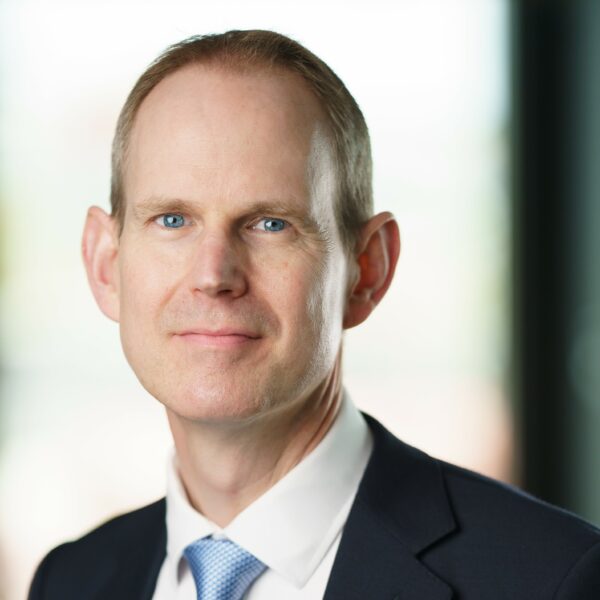What is the scope of duty in clinical (and other professional) negligence claims? The latest word from the Supreme Court in Manchester Building Society v Grant Thornton UK LLP [2021] UKSC 20; and Khan v Meadows [2021] UKSC 21

The Supreme Court’s joint decisions in MBS v Grant Thornton and Khan v Meadows have provided much needed clarity to the scope of a professional’s duty in negligence claims.
This article deals mostly with the consequences of the court’s decision in the second case, the clinical negligence claim of Khan v Meadows, but it must be emphasised that the cases should be viewed together.
Significance
Most significantly for clinical negligence practitioners, Khan v Meadows confirms that the scope of duty analysis, including the SAAMCO cross-check, does apply to clinical negligence. It is not restricted to cases of pure economic loss. The Court rejected attempts to create a carve-out for clinical negligence claims.
The majority of the panel of seven justices held that the scope of a professional’s duty is defined by the objectively assessed purpose of the advice. The so-called SAAMCO counterfactual (i.e. would the claimant have suffered loss even if the defendant’s advice had been correct) is only a cross-check to the central question of purpose.
The judgments are also significant in confirming that the binaries of ‘advice’ and ‘information’ cases which became popularised after the House of Lords’ decision in SAAMCO have been jettisoned as terms of art. It is more appropriate to characterise all cases as falling on a spectrum of purpose.
KHAN v MEADOWS
Facts
Dr Khan, a GP, negligently failed to diagnose that Ms Meadows was a carrier of the haemophilia gene. Ms Meadows went on to have a son who was born with haemophilia. Ms Meadows would have sought foetal testing if she had known she was a carrier and terminated the pregnancy on discovering the foetal diagnosis.
It was accepted that Dr Khan was liable in negligence for the additional costs of bringing up a child with haemophilia. The issue the court considered was whether Dr Khan was also liable for the further costs related to a subsequent diagnosis of Autistic Spectrum Condition (“autism”), which was unrelated to his haemophilia. This made a substantial difference on quantum which had agreed at £1.6m for the additional costs of haemophilia alone whereas damages covering both conditions were agreed at £9m.
Decision
The Supreme Court, with Lords Hodge and Sales (with whom Lord Reed, Lady Black and Lord Kitchin agreed) giving the lead judgments, unanimously dismissed Ms Meadows’ appeal for damages relating to her son’s autism. Only the increased costs associated with the child’s haemophilia were recoverable.
Reasoning
Lords Hodge and Sales set out a six-stage conceptual enquiry for negligence cases [28]:
- Is the harm actionable in negligence? (“the actionability question”)
- What are the risks of harm to the claimant against which the law imposes on D a duty to take care? (“the scope of duty question”)
- Did D breach that duty? (“the breach question”)
- Is the loss the consequence of D’s breach? (“the factual causation question”)
- Is there a sufficient next between the loss and the scope of the duty? (“the duty nexus question”) and
- Is a particular element of the loss irrecoverable because it is (i) too remote, (ii) there is a different effective cause (eg. a NIA); or (iii) C has mitigated their loss or has failed to reasonably avoid loss? (“the legal responsibility question”)
It is important to note that the six questions were not setting down new tests for negligence claims (displacing the formulation of duty, breach, causation, damage) but the questions were useful conceptual tools and could be conflated and addressed in different orders as convenient [29] and [38].
The SAAMCO principle relates to the second question, the scope of duty question. When the claimant has asked for advice about a risk, or an activity which involved that risk, the court asks itself: “what was the risk which the advice or information was intended and was reasonably understood to address?” There will be a spectrum of cases, where either the professional has assumed responsibility for guiding the whole decision-making process, and at the other end, a very limited contribution on which the client (or here patient) relies in making their decision. [41]
The SAAMCO counterfactual, (i.e. if the advice had been correct, would the claimant’s actions have resulted in the same loss) is an analytical tool which is useful in some, but not all, cases, when ascertaining the extent of the defendant’s liability. The question is not whether the claimant would have behaved differently if the advice provided by the defendant had been correct. Rather, the counterfactual assumes that the claimant would behave as he did in fact behave and asks, whether, if the advice had been correct, the claimant’s actions would have resulted in the same loss. By this means, the court can ascertain the loss which is attributable to that information being wrong [53].
The Supreme Court expressly rejected the alternative submissions that either (i) the scope of duty principle as applied in SAAMCO does not apply to clinical negligence claims or (ii) if it did, an exception should be created for clinical negligence cases.
There was no principled reason to exclude clinical negligence from the ambit of the scope of duty principle. It is a general principle of the law of damages and it is therefore irrelevant whether the underlying claim is for physical injury or pure economic loss [62].
In the majority of clinical negligence cases, the scope of duty issue does not require the application of the SAAMCO counterfactual. In undertaking to carry out surgery, a surgeon takes responsibility for both any physical harm and any consequential economic loss caused by their negligence. Likewise, a GP who negligently prescribes the wrong medication. The scope of the responsibility is clear without applying the counterfactual. [63]
It was correct that the child would not have been born but for the GP’s mistake, because the trial judge accepted Ms Meadows’ evidence that, if she had been correctly advised, she would have had the foetus tested and would have terminated the pregnancy on discovering that the child carried the haemophilia gene. But that conclusion as to factual causation does not provide any answer to the question as to the scope of the defendant’s duty. [64]
In this case, the scope of duty question is answered by addressing the purpose for which Ms Meadows obtained the service of Dr Khan. That was for a specific purpose, to ascertain if she was a carrier of the haemophilia gene, and thereby inform her decision in respect of any child which she conceived who was subsequently discovered to carry the gene. It is not relevant if the purpose is characterised as information or advice: the key point was that the service was provided to address a specific risk, the risk of giving birth to a child with haemophilia. [67]
It followed that Dr Khan was only liable for the consequences of the child being born with haemophilia, not any other condition, including autism. The fact that autism was a foreseeable consequence did not change the analysis. Similarly, the existence of a causal link between Dr Khan’s mistake and the birth of the child with autism was not relevant to the scope of Dr Khan’s duty. Applying the SAAMCO counterfactual would lead to the conclusion that the child would have been born with autism, even if Dr Khan’s negligent advice had been correct.
Applying the SAAMCO counterfactual to this case, if Dr Khan’s advice had been correct and Ms Meadows had not been a carrier of the haemophilia gene then the child would not have been born with haemophilia but he would still have had autism [67] – [68].
Lords Burrows and Leggatt agreed but gave different reasoning.
Lord Burrows emphasised the importance of the purpose of the advice/information sought. Dr Khan had actual or constructive knowledge that Ms Meadows was seeking the advice for the purposes of avoiding children with haemophilia, not advice on pregnancy generally nor on autism specifically [78]. Lord Burrows found the six stage enquiry unhelpful, setting out his own seven questions [79].
Lord Leggatt, referring to his parallel judgment in MBS, held that there was no good reason for treating doctors any differently from other professional advisers in terms of excluding liability for adverse consequences which the person relying on their advice would suffer anyway, even if the advice was correct [90]. Lord Leggatt held there was no need to apply the SAAMCO counterfactual in this case but it did it was passed even if it was applied [95].
Conclusion
We set out at the start of this article the significance of the Supreme Court’s latest decisions on the scope of the duty on professionals. But it is worth highlighting a few other takeaway points in the clinical negligence context.
The six-stage conceptual enquiry, endorsed by the majority of the Justices, is directed at the scope of the professional’s duty. It not intended to usurp or replace the conventional analysis of duty, breach, causation and damage. Before reaching the stage of looking at the scope of duty, it will still be necessary to ask and answer the question whether the Defendant owed a duty of care at all. In some professional negligence cases this will be a beginning and an end to the case.
This question was never in issue in the Khan v Meadows case and routinely (but not always) is not controversial in clinical negligence claims. Conventionally, a medical practitioner will owe a duty of care in relation to the treatment they give, the surgery they carry out or the advice provided. This will generally be wider in scope than in the present case. In a large majority of cases of clinical negligence, the conclusion will be that the type of loss is within the scope of the defendant’s duty, without the need to consider the SAAMCO counterfactual. The overarching question will be, what was the purpose for which the patient was seeking the service of the clinician?
That said, a clinician’s duty will sometimes extend to addressing a matter on which the patient has not asked for advice but which the clinician recognises or ought to recognise proposes a material risk to the patient [84]. This will be a fact sensitive enquiry which did not assist Ms Meadows in the present case but will provide a foundation for a wider scope of duty to some other clinical negligence claimants. Whether the duty is narrow and specific or wider and going beyond the intended purpose of the consultation will no doubt be the subject of regular argument and decisions in current and future claims.
Charles Bagot QC and William Golightly
29 June 2021
Disclaimer
This content is provided free of charge for information purposes only. It does not constitute legal advice and should not be relied on as such. No responsibility for the accuracy and/or correctness of the information and commentary set out in the article, or for any consequences of relying on it, is assumed or accepted by any member of Chambers or by Chambers as a whole.
Contact
Please note that we do not give legal advice on individual cases which may relate to this content other than by way of formal instruction of a member of Gatehouse Chambers. However, if you have any other queries about this content please contact:



